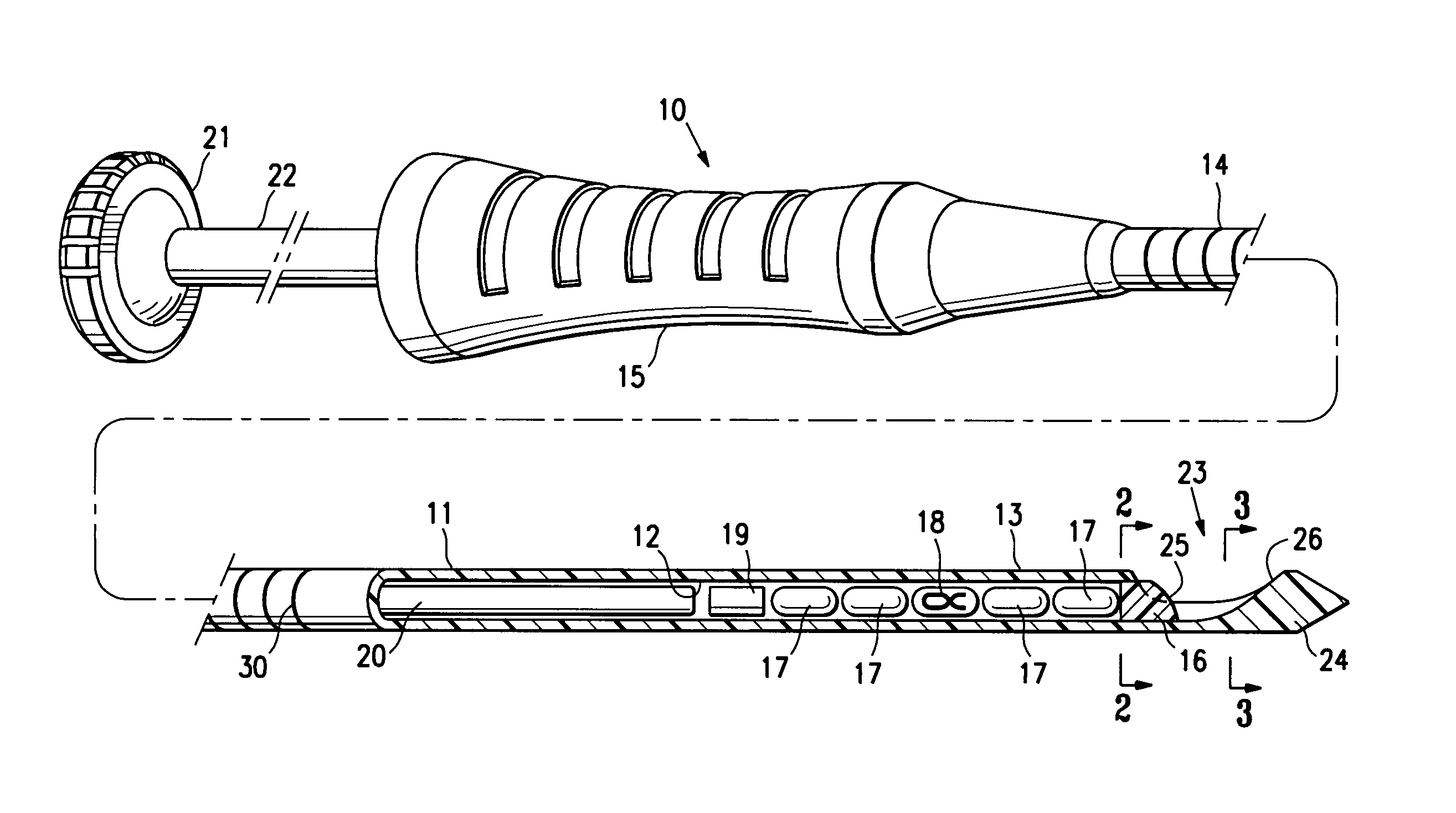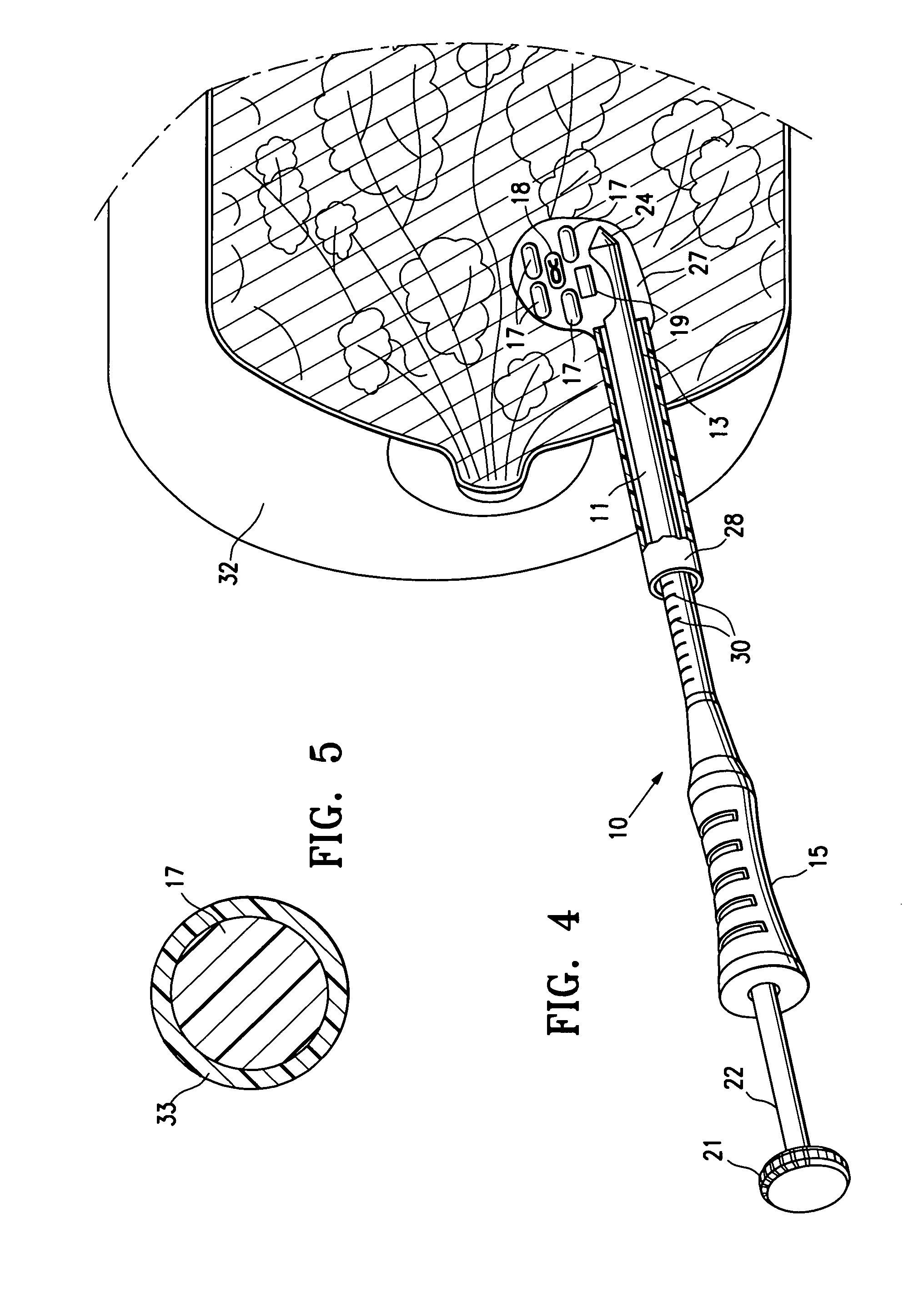Assembly with hemostatic and radiographically detectable pellets
- Summary
- Abstract
- Description
- Claims
- Application Information
AI Technical Summary
Benefits of technology
Problems solved by technology
Method used
Image
Examples
Embodiment Construction
[0029]FIG. 1 illustrates marker delivery system 10 embodying features of the invention which include a delivery tube or cannula 11 with an inner lumen 12, a distal portion 13, and a proximal portion 14 with a handle 15. A releasable distal plug 16, two pairs of hemostatic pellets 17 formed of polysaccharide (e.g. starch) and a radiographically detectable marker pellet 18 between the two pairs of pellets 17 are shown disposed within the inner lumen 12. A pusher pellet 19 is located proximal to the pellets 17 and 18. A plunger 20 is slidably disposed within the inner lumen 12 and is provided with a head 21 on the proximal end 22 to allow an operator to press the plunger further into the inner lumen 12 and push the releasable plug 16, the pellets 17 and 18 and the pusher pellet 19 out of the discharge port or opening 23 in the distal end 24 of delivery cannula 11. Cannula handle 15 allows an operator to hold the cannula steady while pressing plunger 20 to discharge the pellets, e.g. in...
PUM
 Login to View More
Login to View More Abstract
Description
Claims
Application Information
 Login to View More
Login to View More - R&D
- Intellectual Property
- Life Sciences
- Materials
- Tech Scout
- Unparalleled Data Quality
- Higher Quality Content
- 60% Fewer Hallucinations
Browse by: Latest US Patents, China's latest patents, Technical Efficacy Thesaurus, Application Domain, Technology Topic, Popular Technical Reports.
© 2025 PatSnap. All rights reserved.Legal|Privacy policy|Modern Slavery Act Transparency Statement|Sitemap|About US| Contact US: help@patsnap.com



